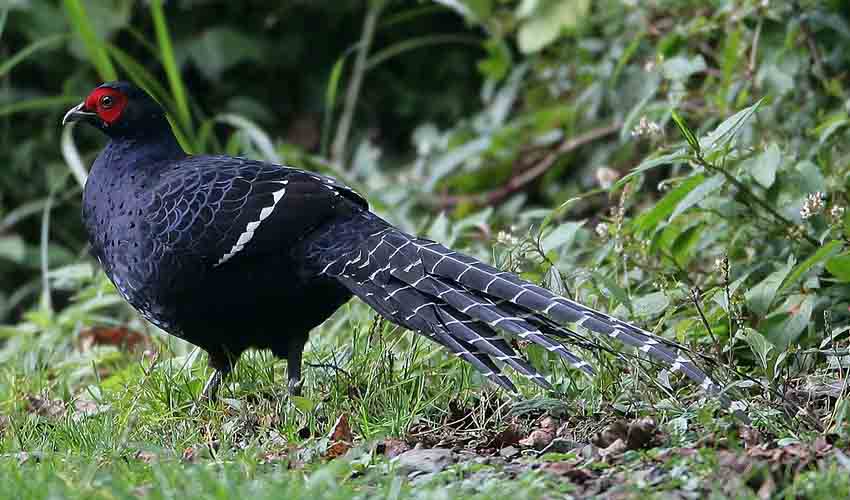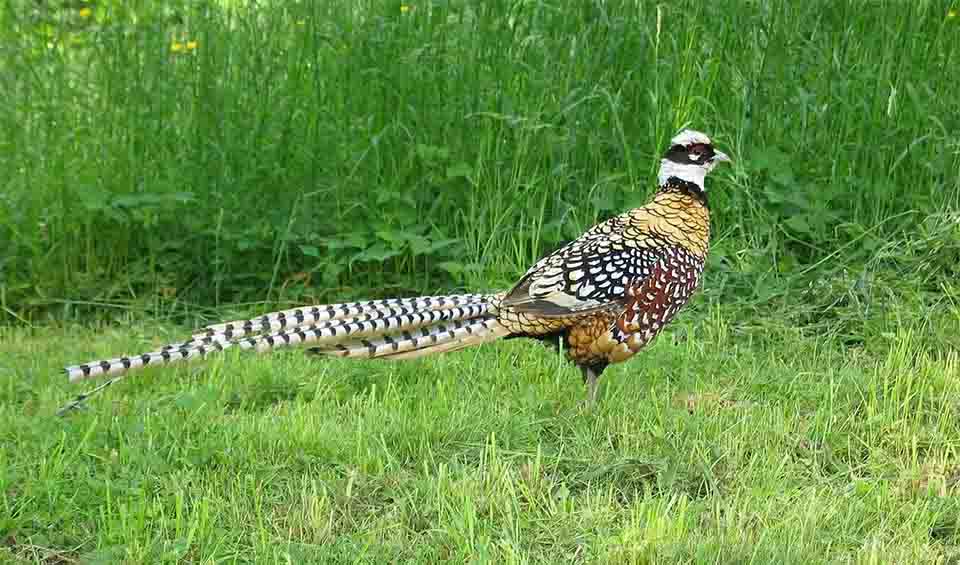Syrmaticus – Long-tailed pheasants
Large pheasants with prominent long tails usually live in evergreen forests in China, Japan, and Taiwan
Long-tailed pheasants are distinctive and diverse birds known for their impressive tail feathers, measuring up to 30 centimeters (12 inches) in length. These birds are remarkable for their physical appearance, varied behaviors, and adaptability to different environments.
Males of these species are often resplendent with richly colored plumage and possess short spurs for fighting during the breeding season. Their red facial wattles are a sign of vitality and play a role in courtship displays. In contrast, females are typically more subdued in coloration with brownish feathers, providing them camouflage while nesting and rearing young.
The behavior of long-tailed pheasants towards humans can vary greatly among species. Some, like the Reeve’s pheasant, are known to respond aggressively, which can be attributed to their territorial nature. Others, such as the Mikado Pheasant, may become habituated to humans, especially if they are regularly fed, demonstrating the adaptability of these birds to different conditions.
Long-tailed pheasants may lead solitary lives or form pairs in the wild, particularly during the breeding season. Their nests are often simple structures built on the ground using dead plant material like leaves and twigs. The responsibility of incubating the eggs and raising the chicks falls solely on the female, which is common among many bird species. The chicks are precocial, meaning they are relatively mature and capable of moving around shortly after hatching.
Foraging behavior in these pheasants is quite similar to that of domestic chickens. They are omnivorous and have a varied diet, including plants, small animals, invertebrates, and seeds. This diet provides them with the necessary nutrients to support their size and the growth of their long tails.
Some long-tailed pheasant species have been introduced around the world as ornamental birds due to their stunning appearance. They are also used in sport hunting in some regions, which has a long tradition but also raises conservation and ethical questions.
Species in this genus
Reeves’s pheasant
Endemic to China, the largest pheasant with the longest tail feather measures up to 2.4 meters (7.9 ft)
Elliot’s pheasant
Often described as a “living jewel” of the Chinese forests



